import pandas as pd # For data handling
import seaborn as sns # For plotting
import numpy as np
import matplotlib.pyplot as plt # For plotting
import matplotlib
#some preferred user settings
plt.rcParams['figure.figsize'] = (18.0, 12.0)
pd.set_option('display.max_columns', None)
%matplotlib inline
import warnings
warnings.filterwarnings(action='ignore')
from mpl_toolkits.axisartist.parasite_axes import HostAxes, ParasiteAxes
import matplotlib.pyplot as plt
from matplotlib.ticker import MultipleLocator
import datetime as dt
import matplotlib.dates as mdates
import pandas
Metal = CAD
# Variables
AUM = Metal.iloc[:,[7]].head(104)
MM = Metal.iloc[:,[0]].head(104)
PRICE = Metal.iloc[:,[8]].head(104)
#Last_Report = Metal.iloc[:,[9]].head(1).dt.strftime('%d %b %Y').to_list()
DATES = Metal.iloc[:,[10]].head(104)
# Dataframe for Net Position High
Net_High = Metal[Metal.iloc[:,[0]] == Metal.iloc[:,[0]].max()]
# Variables for Chart Annotation for Net Position High
Pos_High_Date = Net_High.iloc[:, [0]]
Pos_High_AUM = Net_High.iloc[:, [7]][0]/[1000000000]
Pos_High_Price = Net_High.iloc[:, [8]].to_numpy()[0].round().astype('int')
Pos_High = Net_High.iloc[:, [0]][0].astype('int')
Str_Date = mdates.num2date(Pos_High_Date)
Str_Date = pd.to_datetime(Str_Date[0]).strftime("%d %b %y")[0]
# Dataframe for Net Position Low
Net_Low = df[df['#CAD_Managed_Money_Net'] == df['#CAD_Managed_Money_Net'].head(104).min()]
# Variables for Chart Annotation for Net Position High
Pos_Low_Date = Net_Low.iloc[:, [55]].to_numpy()
Pos_Low_AUM = Net_Low.iloc[:, [26]].to_numpy()[0].round()/[1000000000]
Pos_Low_Price = Net_Low.iloc[:, [27]].to_numpy()[0].round().astype('int')
Pos_Low = Net_Low['#CAD_Managed_Money_Net'][0].astype('int')
Str_Date_Low = mdates.num2date(Pos_Low_Date)
Str_Date_Low = pd.to_datetime(Str_Date_Low[0]).strftime("%d %b %y")[0]
# C Brand Colour Scheme
C = ['deepskyblue', '#003399', 'slategray', '#027608','#cc0000']
def make_patch_spines_invisible(ax):
ax.set_frame_on(True)
ax.patch.set_visible(False)
for sp in ax.spines.values():
sp.set_visible(False)
fig, host = plt.subplots(figsize=(25,15))
fig.subplots_adjust(right=0.8)
#twinx() creates another axes sharing the x axis we do this twice
par1 = host.twinx()
par2 = host.twinx()
# Offset the right spine of par2 the ticks
par2.spines["right"].set_position(("axes",1.08))
#because par2 was created by twinx the frame is off so we need to use the method created above
make_patch_spines_invisible(par2)
# second, show the right spine
par2.spines["right"].set_visible(True)
######### Colouring in Plots
x = DATES
y = MM
ylim = host.get_ylim()
Long = host.imshow(np.linspace(0, 1, 256).reshape(-1, 1), cmap= 'Blues', vmin=-0.5, aspect='auto',
extent=[x.min(), x.max(), 0, y.max()], origin='lower')
poly_pos = host.fill_between(x, y.min(), y, alpha=0.1)
Long.set_clip_path(poly_pos.get_paths()[0], transform=host.transData)
poly_pos.remove()
Short = host.imshow(np.linspace(0, 1, 256).reshape(-1, 1), cmap='OrRd', vmin=-0.5, aspect='auto',
extent=[x.min(), x.max(), y.min(), 0], origin='upper')
poly_neg = host.fill_between(x, y, y.max(), alpha=0.1)
Short.set_clip_path(poly_neg.get_paths()[0], transform=host.transData)
poly_neg.remove()
##########
#plot data
p1, = host.plot(DATES, MM, label="Managed Money Net Position", linewidth=0.0,color = Citi[1], alpha = 0.8)
p2, = par1.plot(DATES, AUM, label="AUM",linewidth=1, marker = '$A$',mew = 1,mfc = 'w', color = Citi[0], alpha = 0.8)
p3, = par2.plot(DATES, PRICE, label="3M Price",linewidth=1, marker = '$p$', color = Citi[2], alpha = 0.8)
#Automatically scale and format
host_labels = ['{:,.0f}'.format(x) + 'K Lots' for x in host.get_yticks()/1000]
host.set_yticklabels(host_labels)
par1_labels = ['{:,.1f}'.format(x) + ' $Billion' for x in par1.get_yticks()/1000000000]
par1.set_yticklabels(par1_labels)
par2_labels = ['{:,.0f}'.format(x) + ' $' for x in par2.get_yticks()]
par2.set_yticklabels(par2_labels)
# x Axis formatting (date)
formatter = matplotlib.dates.DateFormatter('%b- %Y')
host.xaxis.set_major_formatter(formatter)
# Rotates and right-aligns the x labels so they don't crowd each other.
for label in host.get_xticklabels(which='major'):
label.set(rotation=30, horizontalalignment='right')
# Axis Labels
host.set_xlabel("Date")
host.set_ylabel("Managed Money Net Position")
par1.set_ylabel("AUM")
par2.set_ylabel("3M Price")
# Tick Parameters
tkw = dict(size=10, width=2.5)
# Set tick colours
host.tick_params(axis = 'y', colors = Citi[1], **tkw)
par1.tick_params(axis = 'y', colors = Citi[0], **tkw)
par2.tick_params(axis = 'y', colors = Citi[2], **tkw)
#host.tick_params(which='major',axis = 'x',direction='out', colors = Citi[2], **tkw)
#plt.xticks(x, rotation='vertical')
#host.xaxis.set_major_locator(AutoMajorLocator())
host.xaxis.set_major_locator(MultipleLocator(24))
host.tick_params('x',which='major', length=7)
#Label colours taken from plot
host.yaxis.label.set_color(p1.get_color())
par1.yaxis.label.set_color(p2.get_color())
par2.yaxis.label.set_color(p3.get_color())
# Map Title
host.set_title('Aluminium Managed Money Net Positioning as of %s'% Last_Report[0],fontsize='large')
#Colour Spines cant figure out how to do it for the host
par1.spines["right"].set_edgecolor(p2.get_color())
par2.spines["right"].set_edgecolor(p3.get_color())
###### Annotation Tests ##########
## Net Position High Box
host.annotate(f' Net Position High | {Pos_High} \n Date | {Str_Date} \n AUM | ${Pos_High_AUM[0].round(1)} Billion\n 3M Price | ${Pos_High_Price[0]}$',
xy=(Pos_High_Date, Pos_High), xycoords='data',
xytext=(0.02, .85), textcoords='axes fraction',
horizontalalignment='left',
verticalalignment='bottom',
color='white',
bbox=dict(boxstyle="round", fc= Citi[1],edgecolor='white'),
arrowprops=dict(
facecolor='black',
arrowstyle= '->'))
## Net Position Low Box
host.annotate(f' Net Position Low | {Pos_Low} \n Date | {Str_Date_Low} \n AUM | ${Pos_Low_AUM[0].round(1)} Billion\n 3M Price | ${Pos_Low_Price[0]}$',
xy=(Pos_Low_Date, Pos_Low), xycoords='data',
xytext=(0.02, .80), textcoords='axes fraction',
horizontalalignment='left',
verticalalignment='top',
color='white',
bbox=dict(boxstyle="round", fc= Citi[4],edgecolor='white'),
arrowprops=dict(
facecolor='black',
arrowstyle= '->'))
################
# Legend - a little complicated as we have to take from multiple axis
lines = [p1, p2, p3]
########## Plot text and line on chart if you want to
# host.axvline(x = DATES[52] , linestyle='dotted', color='black') ###Dotted Line when Needed
# host.text(2020.3, 10, 'Managed Money \n Aluminium')
# host.text(2020.5, 92, r'Ali',color='black')
# host.text(2020.8,15, r'some event', rotation=90)
host.legend(lines,[l.get_label() for l in lines],loc=2, fontsize=12,frameon=False)
plt.savefig('multiple_axes.png', dpi=300, bbox_inches='tight')



